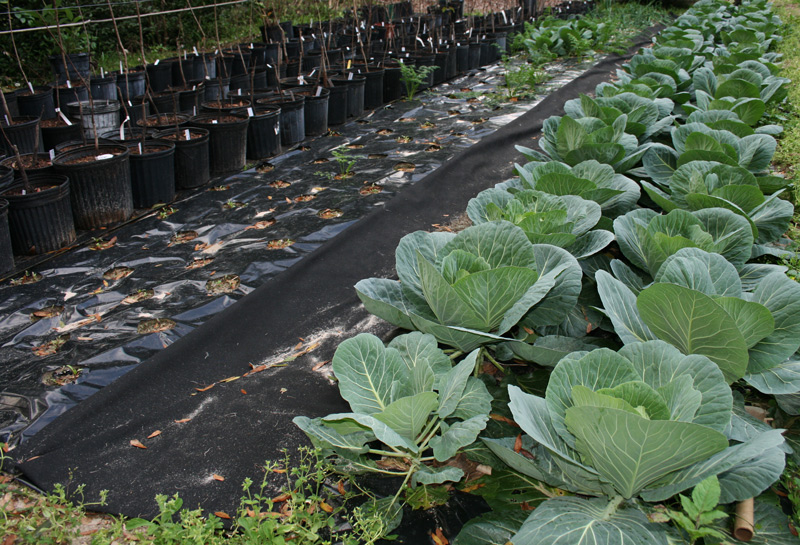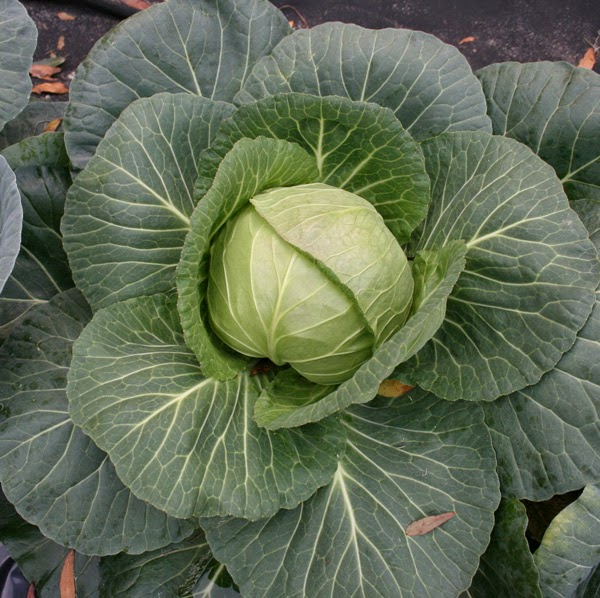I’m sold on using seaweed fertilizer, whether fresh or purchased – and as people try it for themselves, they’re also learning its benefits.
As commenter Guian Millares writes:

“Dude it worked!!! My plants have grown very well with washed seaweeds! I use or twice everyweek and it is working awesome! Ive never had such growth before!! wow! Thanks man! God bless you….never listen to those who say negative things on you…You are doing great! God bless you.”
Thank you! God has blessed me and continues to do so. And I count the abundance of free local seaweed as one of those blessings.
A year ago I posted this video on making and using seaweed fertilizer in the garden:
Which reminds me: I have some new garden beds that could really benefit from some seaweed application. I’ll have to take a couple sacks with me next time I hit the beach with the family.
If you live far from the beach or don’t feel like hauling bags of seaweed, you can get good seaweed fertilizers on Amazon. Neptune’s Harvest is a popular one and is really rich since it’s a mix of both seaweed and fish. Fish emulsion is like magic in the garden – and when you mix it with seaweed, you’re really adding the bounty of the ocean to your plants. They go crazy. In fact, my friend Jo the Master Gardener once told me that fish emulsion is the way to grow truly awesome organic strawberries in Florida. It greens them up and makes them fruit without encouraging leaf growth over fruit.
Another option that I used to use on my beds in North/Central Florida was kelp meal. It’s loaded with minerals and a little goes a long way. I don’t know if kelp is totally safe post-Fukushima, but I haven’t heard anything really scary lately.
I used kelp meal as part of the fertilizer mix I used to grow these amazing cabbages:


I followed the directions for making COF (Complete Organic Fertilizer) which Steve Solomon writes about in Gardening When it Counts. Once I had my mix, I sprinkled it all down the beds, raked it in, put down a weed barrier, punched holes, then planted cabbage seedlings. They did better than any I’ve grown before or since. Absolutely beautiful heads.
Seaweed was part of that. Consider it a multivitamin for your garden, loaded with micronutrients. The big three – NPK – are the main course – and seaweed has those, but not in huge amounts – but seaweed is really rich in the little things which add to the overall health of your plants.
How to Make and Use Seaweed Fertilizer
So, you have some seaweed and want to try it out? Here are three good options.
Option #1: Seaweed as Mulch
Take the seaweed, rinse it out, then use it as mulch. That works nicely and breaks down over time. Maritime Gardening agrees:
Option #2: Compost it!
Put seaweed directly into the compost pile. Consider it a “green” layer. I don’t bother rinsing it when I do this, figuring the salt on it will work its way through.
Option #3: Make Liquid Seaweed Fertilizer
You’ve seen me do this before with weeds, manure, kitchen scraps, etc.:
But you can do it with seaweed as well. It’s a great additive – or it can be used all by itself.
This is a very good video where a man does the same method I do, but with comfrey and other northern leaves, along with seaweed:
Hey, that guy looks way more pro than me. I should send him a T-shirt.
Now go – find yourself some seaweed!


5 comments
Seaweed is my jam. I mulch everything with it as well as use it as a foliar application on the annuals. Allow me to break down my super easy method…
Mulch-
I gather it from a boat ramp. The best time to get it is in January because it is most abundant and the bugs that live in it (mostly gnats) are minimal because of the low temps. I bring a utility trailer with a tarp and load it with a pitch fork.
No need to rinse the seaweed. Why would you spray chlorinated, fluoridated water on it. You want all of the goodness to go right in the system. A little salt never hurt anything. We live in Florida
As an added bonus, you will have mangrove seeds germinate and you can water them occasionally with a little sea water and the live. How cool is that? Mangroves in the understory! What!?
Seaweed Tea-
I fill a bucket with seaweed and top it off with rain water. Let it sit for a month or so until it starts to smell like cow manure. Than I dilute the concoction in a 2 gallon watering can and pour it on the annual beds. The plants love it and the pests (whiteflies) hate it. I even have the old man down the street using this method. IT WORKS!
Trust me when I say. Don’t worry about the salt.
Mulch Respect
That is awesome – thank you for the field report.
I just pulled two large bags off of Hollywood Beach (Fl) today. One bag went to mulching my raised garden and container plants, and the other went into my composter.
I rinsed the mulch seaweed before laying it down to get sand out of it, and had a thought: Can I turn that rinse/salt water into tea? I added some molasses and active compost and am aerating it for 24 hrs. Is it worth it, or will the salt kill everything on which it goes? I was planning on diluting it.
Hollywood Beach was my old stomping grounds. I used to own a little house on Cleveland street.
And yes, you can use it but be careful. The Korean Natural Farming guys add (I believe) a gallon of seawater to their 55-gallon barrels of fermenting materials. You could probably thin 20 parts water to 1 part seaweed/compost water and it would work fine. Some plants can take a lot more salt than that, but go slow and see what happens. The minerals are good for them.
[…] wrote on seaweed fertilizer a week ago and noted my plan to do this. I figured while I was at it I might as well make a video out of it. […]
Comments are closed.